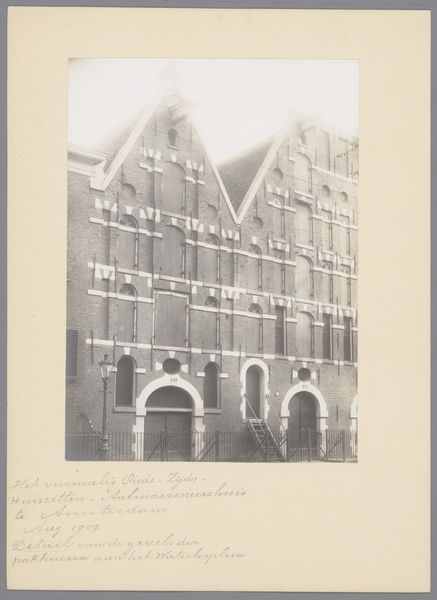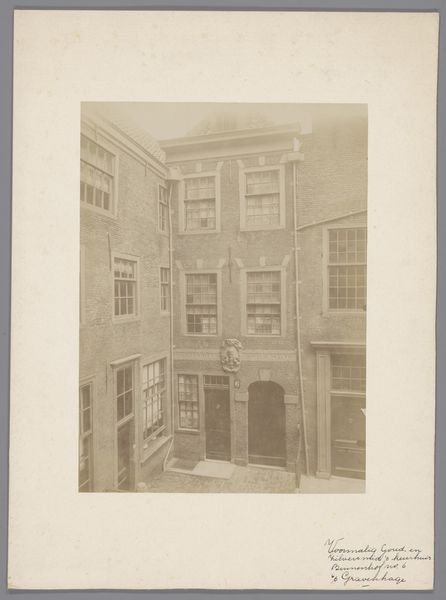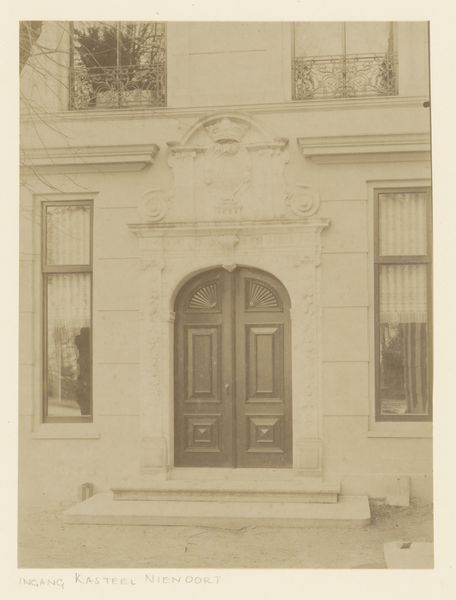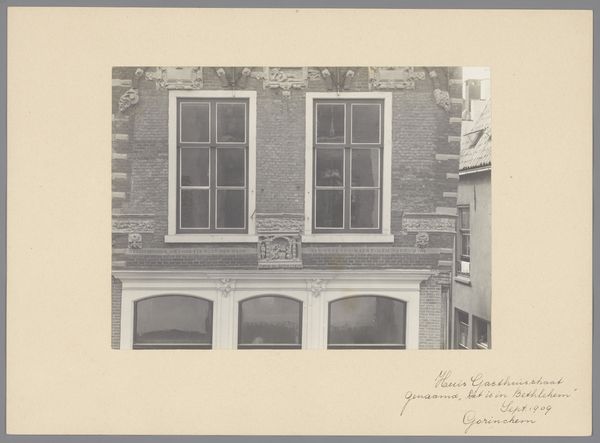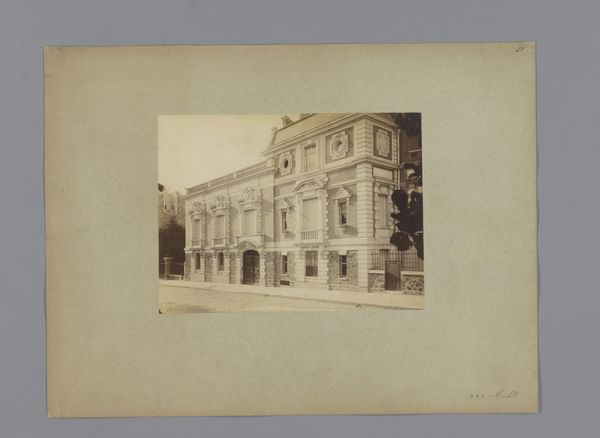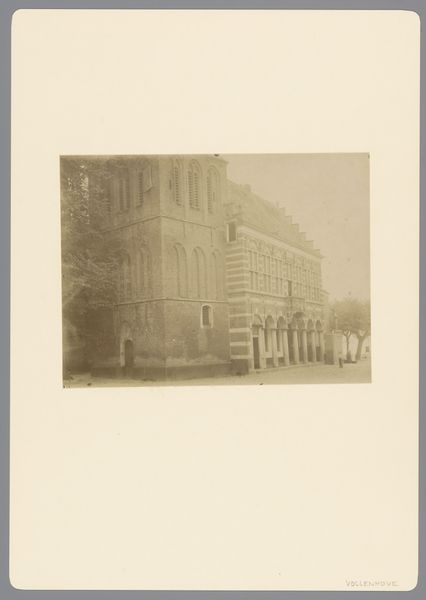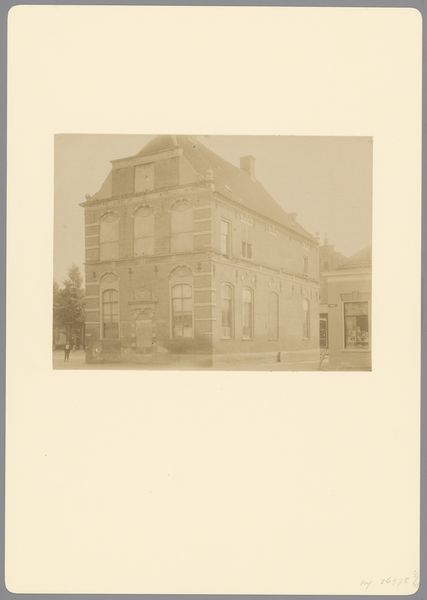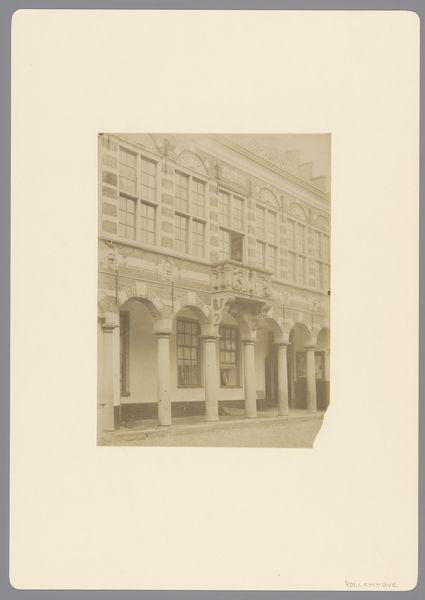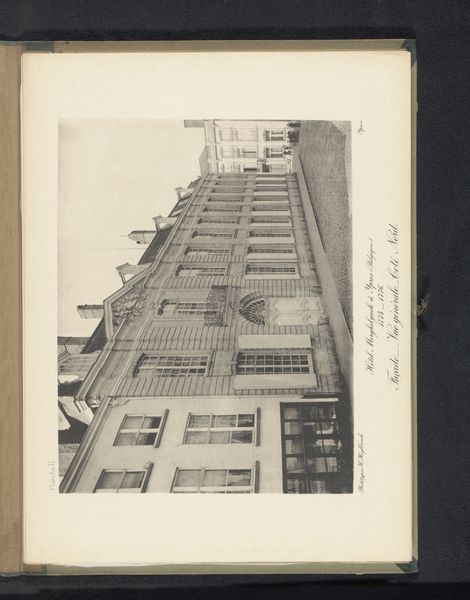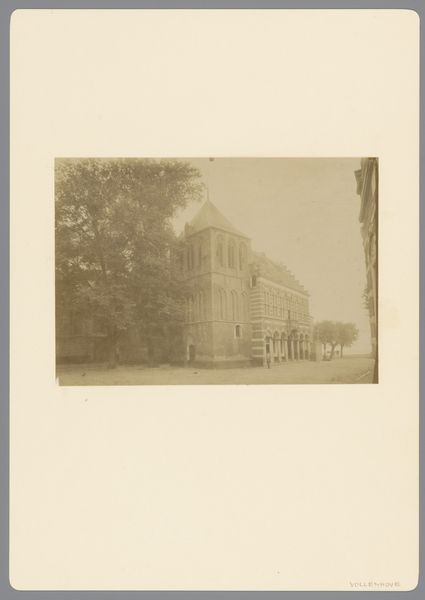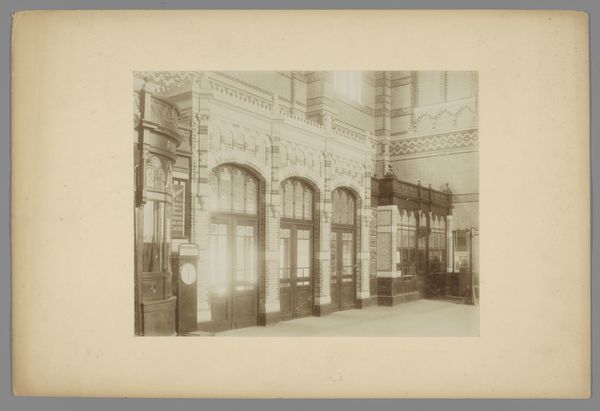
Dimensions: height 219 mm, width 161 mm
Copyright: Rijks Museum: Open Domain
This photograph of the facade at Veerkade 14 in The Hague was captured in 1903 by an unknown photographer from Monumentenzorg, and is an exercise in light, tone, and structure. The palette is almost entirely monochrome, rendered in varying shades of sepia, evoking nostalgia. The photographer, probably working with a large format camera, would have been interested in the geometry of the image; the repeated verticals and horizontals and the subtle variations in light and shadow across the surface of the building. The building is captured in a way which emphasizes its flatness. The three-dimensional world is distilled into a two-dimensional plane. Look at the shadows under each window ledge, and notice how each one is slightly different, depending on the amount of light that falls upon it. This helps to create a sense of depth in the image. It is as if the image is trying to escape its own surface, and to pull us into another space. This makes me think of the work of Bernd and Hilla Becher, who also photographed industrial buildings in a similarly detached and objective manner. Photography, like painting, is ultimately about the act of seeing.
Comments
No comments
Be the first to comment and join the conversation on the ultimate creative platform.
